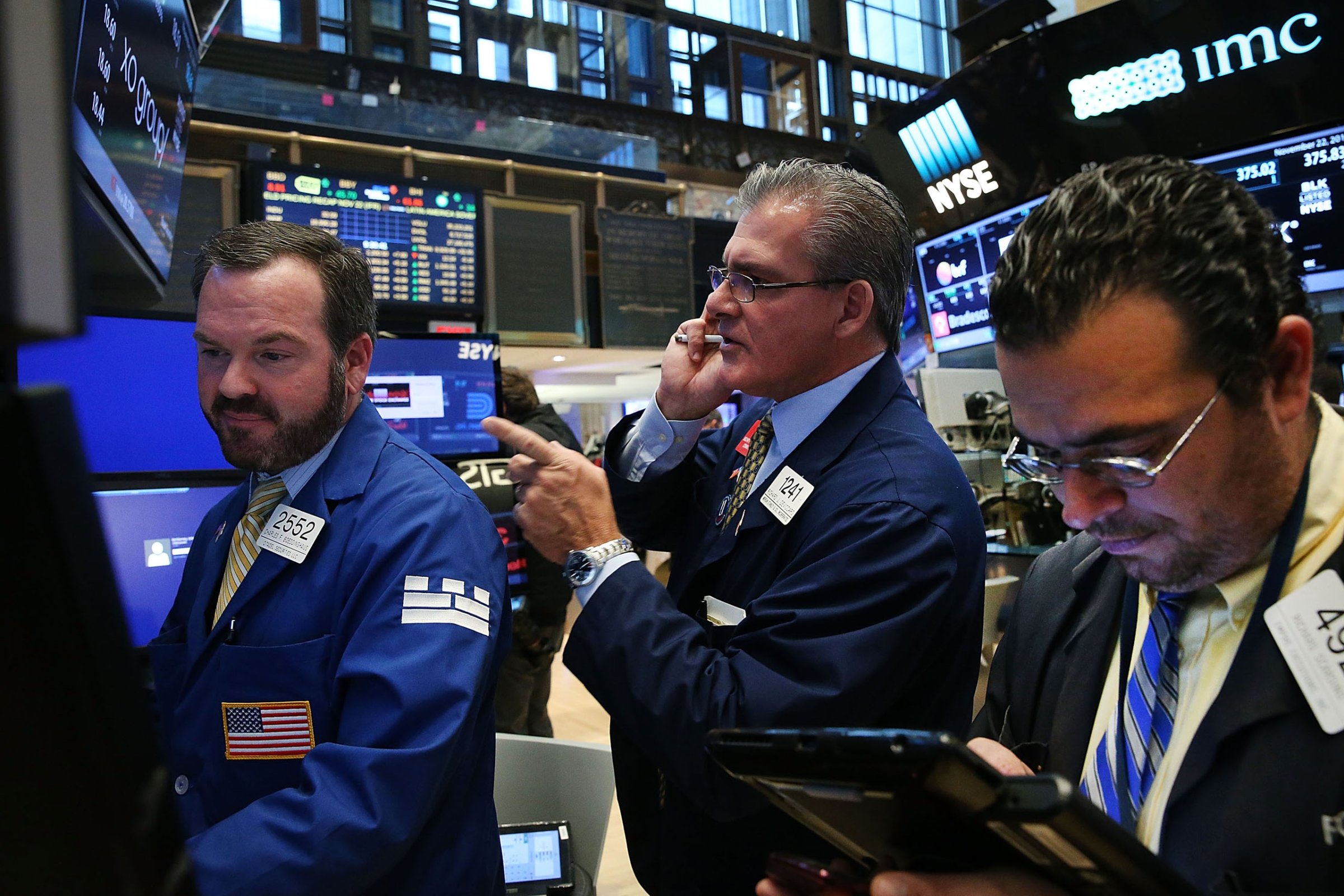
(New York) — Key stock indexes on Wall Street swept to record intraday and closing highs on Black Friday thanks to gains in consumer staple and technology shares, while European stocks climbed and a stabilization in U.S. Treasury yields promoted investors to sell the dollar.
The Dow, S&P 500 and Nasdaq indexes, as well as the small cap Russell 2000, hit record closing and intraday highs in thin trading, with the U.S. stock market closing at 1:00 p.m. ET (1700 GMT). For the week, the Dow and Nasdaq gained 1.5 percent, while the S&P 500 rose 1.4 percent.
The S&P 500 consumer staples index’s 0.8 percent gain boosted shares on Black Friday, which traditionally kicks off the U.S. holiday shopping season.
European stocks notched a third straight week of gains, even as a tumble in oil prices dragged commodities shares lower. Uncertainty over whether OPEC will agree to cut production at the group’s meeting next week weighed on crude prices.
Expectations that U.S. President-elect Donald Trump’s promises of tax cuts, higher infrastructure spending and reduced regulation would benefit certain industries, including banking, industrials and healthcare, have underpinned multiple recent all-time highs in U.S. shares.
“While many stocks have risen quite briskly, investors are looking for some forgotten names in the rally,” said Andre Bakhos, managing director at Janlyn Capital in Bernardsville, New Jersey.
MSCI’s all-country world equity index was last up 1.86 points, or 0.45 percent, at 414.99.
The Dow Jones industrial average closed up 68.96 points, or 0.36 percent, at 19,152.14. The S&P 500 ended up 8.63 points, or 0.39 percent, at 2,213.35. The Nasdaq Composite closed up 18.24 points, or 0.34 percent, at 5,398.92.
Europe’s broad FTSEurofirst 300 index closed up 0.29 percent at 1,351.66.
While positive for stocks, Trump’s surprise victory in the Nov. 8 election has sent U.S. Treasury yields higher as investors bet his pro-growth and inflationary policies will erode the value of U.S. bonds.
U.S. Treasuries were last steady after two-year yields hit a 6-1/2-year high of 1.17 percent overnight as investors evaluated how much further the selloff had to run.
“There are a number of people that want to buy in but also don’t want to get whipped by the next 25-to-30 basis point selloff,” said Gennadiy Goldberg, an interest rate strategist at TD Securities in New York.
The dollar index, which measures the greenback against a basket of six major currencies, was last down 0.3 percent at 101.430 as investors took advantage of the pullback in U.S. bond yields to lock in gains after the dollar hit a nearly 14-year peak on Thursday.
Despite Friday’s steep losses, U.S. and benchmark Brent crude oil prices eked out a second straight week of gains. Brent crude settled down $1.76, or 3.59 percent, at $47.24 a barrel. U.S. crude settled down $1.90, or 3.96 percent, at $46.06 a barrel.
Gold prices tumbled to a 9-1/2 month low of $1,171.2100 an ounce, partly on expectations of a U.S. interest rate increase by the Federal Reserve next month. (Additional reporting by Yashaswini Swamynathan in Bengaluru, Jessica Resnick-Ault in Boston and Karen Brettell and Gertrude Chavez-Dreyfuss in New York; Editing by Bernadette Baum and Meredith Mazzilli)
More Must-Reads from TIME
- Donald Trump Is TIME's 2024 Person of the Year
- Why We Chose Trump as Person of the Year
- Is Intermittent Fasting Good or Bad for You?
- The 100 Must-Read Books of 2024
- The 20 Best Christmas TV Episodes
- Column: If Optimism Feels Ridiculous Now, Try Hope
- The Future of Climate Action Is Trade Policy
- Merle Bombardieri Is Helping People Make the Baby Decision
Contact us at letters@time.com